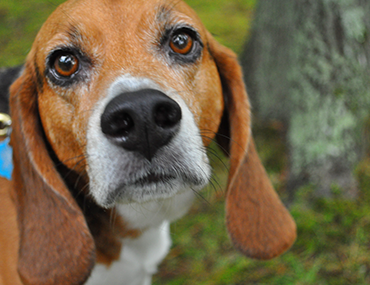We continue our investigation of cosmetic or plastic surgeries that can enhance pets’ quality of life, as opposed to simply making them look better. In part 1, we discussed several procedures involving the face. Let’s move on to the back end of the body and go over another three “cosmetic” surgery options.
Vulvoplasty, or plastic surgery of the vulva
OK, sure, this may sound a little weird... But a surprisingly high number of female dogs, especially overweight, have an extra (or redundant) skin fold which can cover part or all of their vulva.
After they urinate, urine will “sit” between the extra skin and the vulva. Normal skin bacteria love this moist, dark, warm environment and multiply. This can lead to skin irritation or infection, a bladder infection and sometimes incontinence.
In fact, these patients classically have multiple bladder infections, over months to years. They receive antibiotics, and get better... until the next time. Only a thorough exam leads to the discovery of the extra skin.
The solution, as you can imagine, is surgery: just the right amount of skin is removed. The remaining skin is sutured back together, and we typically get excellent results. Of course, other causes of bladder infection and incontinence exist and need to be investigated. Tail fold surgery
Tail fold surgery
Bulldogs and other breeds can have a strange condition called “ingrown tail,” “screwtail,” or “corkscrew tail." The last vertebrae in the spine can twist inward, toward the dog instead of away from the spine. In turn, the skin around the remnant of the tail seems to grow inward. Bacteria, thriving on skin secretions, can cause a severe infection. To that, add soiling by poop, and it can be quite a smelly mess...
Treatment involves removing the crooked tail and the diseased skin.
Dewclaw removal
Why would dewclaw removal be “medically indicated”? The dewclaw is the end of the first toe, or the equivalent of your thumb, in the back leg. Some breeds (Great Pyrenees, Briards) even have a double dewclaw! Some people have them removed to prevent trauma since these toes are loose and can easily get caught. This is not only painful, it can be quite bloody. Dewclaws are typically removed in very young puppies, or later on at the time of neutering, i.e. under the same anesthesia.
As you can see, these three “cosmetic” surgeries may be medically recommended to actually address or prevent an annoying or smelly medical condition. If you feel that your pet would benefit from one of these procedures, you may want to ask your family veterinarian.
If you have any questions or concerns, you should always visit or call your veterinarian – they are your best resource to ensure the health and well-being of your pets.
The opinions and views expressed in this post are those of the author's and do not necessarily represent the beliefs, policies or positions of PetHealthNetwork.com, IDEXX Laboratories, Inc. or its affiliates and partner companies.
